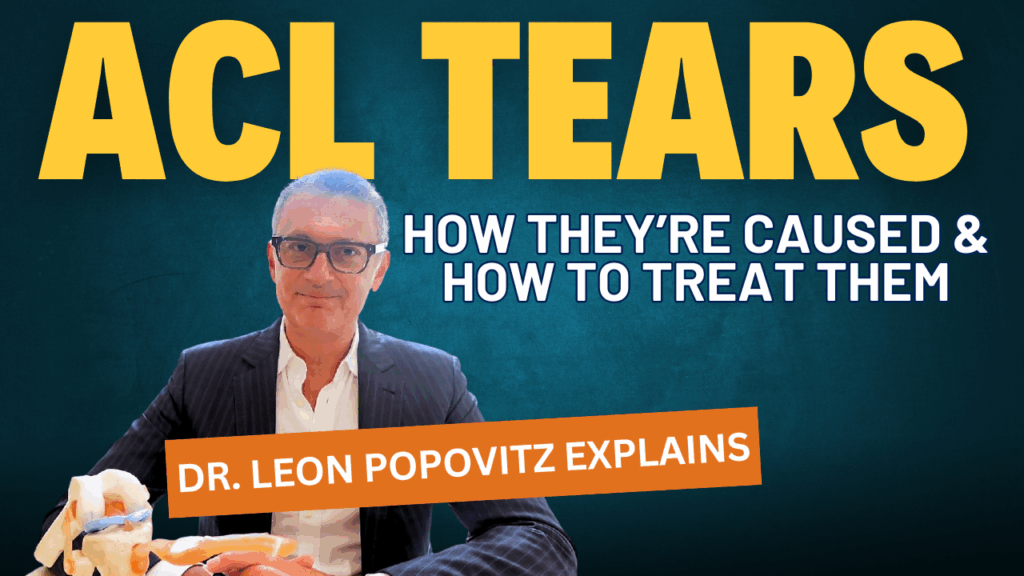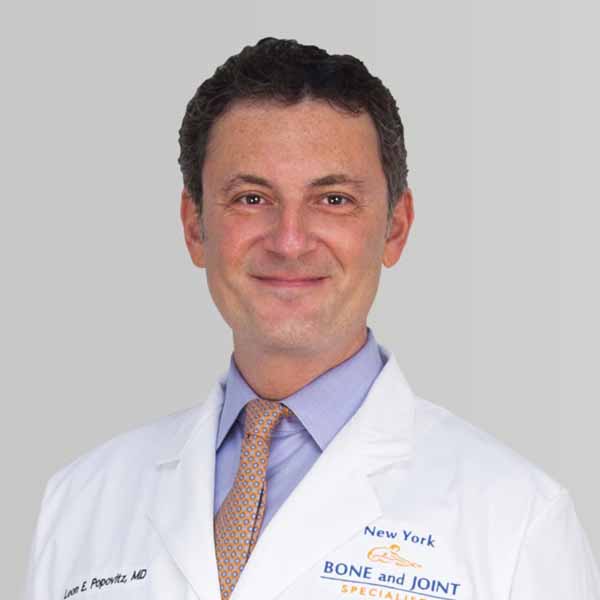Anterior Cruciate Ligament (ACL) injuries are among the most common knee injuries, especially in athletes who participate in sports that involve sudden stops, pivots, or changes in direction. In this guide, Dr. Leon Popovitz from New York Bone & Joint Specialists explains ACL anatomy, common causes of tears, and the most effective treatment options to restore stability and prevent long-term knee damage.
What is the ACL?
The anterior cruciate ligament (ACL) is a central ligament inside the knee that connects the femur (thigh bone) to the tibia (shin bone). It plays a crucial role in stabilizing the knee and controlling forward movement of the tibia. Alongside the ACL is the posterior cruciate ligament (PCL), which provides additional support to the joint.
The knee also contains menisci, which are cartilage cushions on the inside and outside of the joint. These help absorb shock and protect the articular cartilage lining the bones.
How ACL Tears Happen
ACL tears often occur during non-contact sports when sudden pivots, stops, or awkward movements strain the knee. Common scenarios include:
- Soccer players sharply turning or cutting
- Baseball players rounding bases
- Skiing or other fast-paced sports with sudden stops
Symptoms of an ACL tear may include:
- Sudden knee swelling
- A popping sensation at the time of injury
- Instability, where the knee feels like it might “give out”
Without proper treatment, ACL tears can lead to meniscus damage, which reduces cushioning, causes articular cartilage degeneration, and may result in early-onset arthritis.
Treatment Goals
The main goals of ACL treatment are:
- Stabilizing the knee to prevent further injury
- Restoring function so patients can return to normal activities
- Preventing long-term joint degeneration and arthritis
ACL reconstruction is most commonly performed in younger, active patients, as their joints are more prone to high-demand injuries.
ACL Repair vs. Reconstruction
Historically, ACL repairs attempted to reattach the torn ligament to the bone, but these often failed due to poor healing. Today, ACL reconstruction is the gold standard.
ACL Reconstruction Process:
- A portion of tendon tissue is harvested, commonly from the patellar tendon (central third with bone attachments above and below).
- The harvested tissue is implanted arthroscopically in place of the torn ACL.
- Bone-to-bone fixation provides strong and long-lasting stability.
Alternative Graft Options:
- Hamstring tendon
- Quadriceps tendon
ACL Repair Innovations:
Recently, new techniques using scaffolds and structural sutures have been developed to repair certain ACL tears directly. This method works best for avulsion injuries, where the ligament tears off the bone rather than the mid-substance.
Important Considerations:
- High-demand athletes or professionals may still benefit more from traditional reconstruction.
- Each case is unique, and treatment decisions should be personalized based on injury type, tissue quality, and activity level.
Conclusion
ACL tears can significantly impact knee stability and long-term joint health if left untreated. Reconstructive surgery remains the gold standard, but newer repair techniques may be suitable in select cases. Always consult an experienced orthopedic specialist to determine the best treatment plan.
About Dr. Leon Popovitz
Dr. Popovitz is an orthopedic surgeon specializing in knee injuries and sports medicine at New York Bone & Joint Specialists. He is dedicated to providing expert care that restores function, reduces pain, and prevents long-term joint damage.





